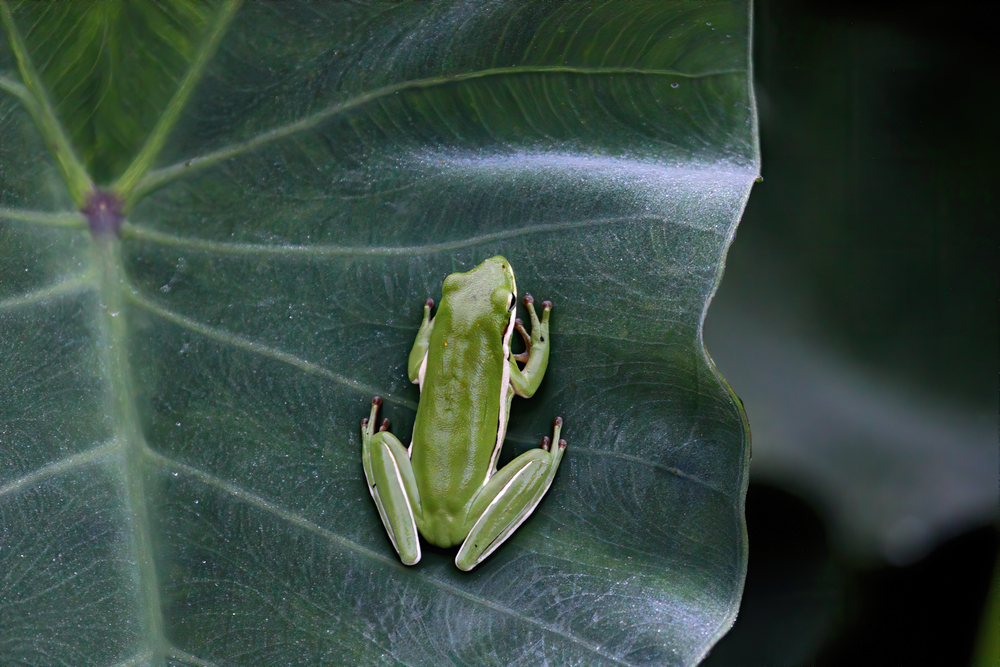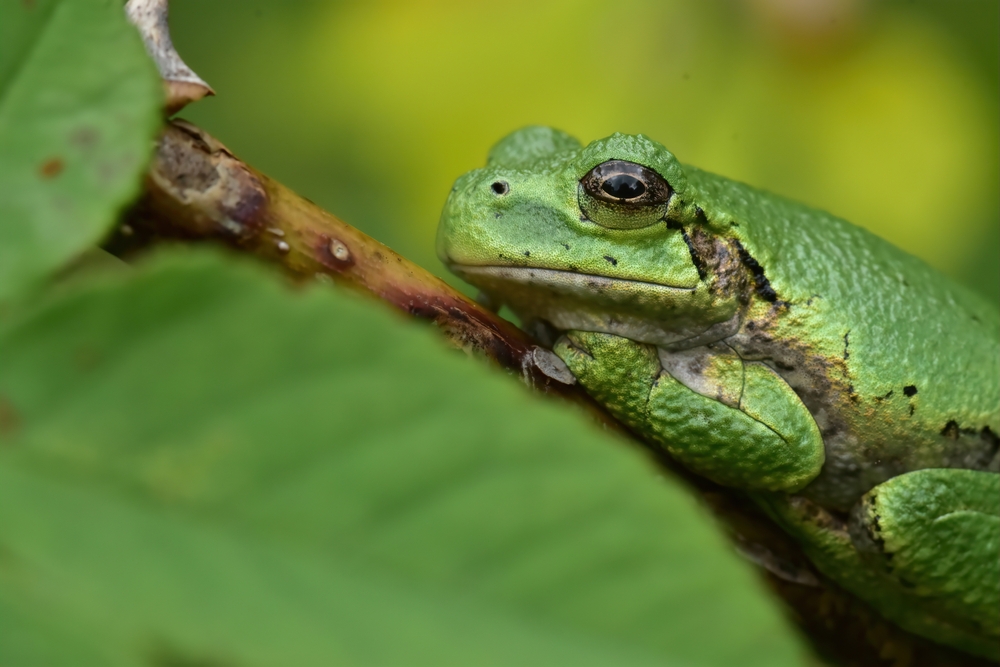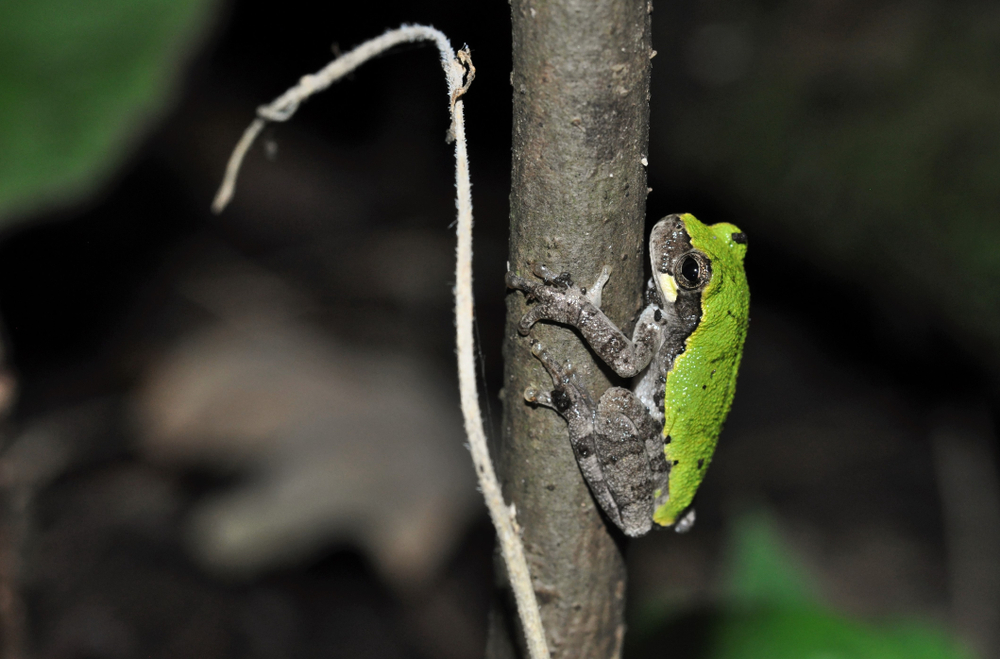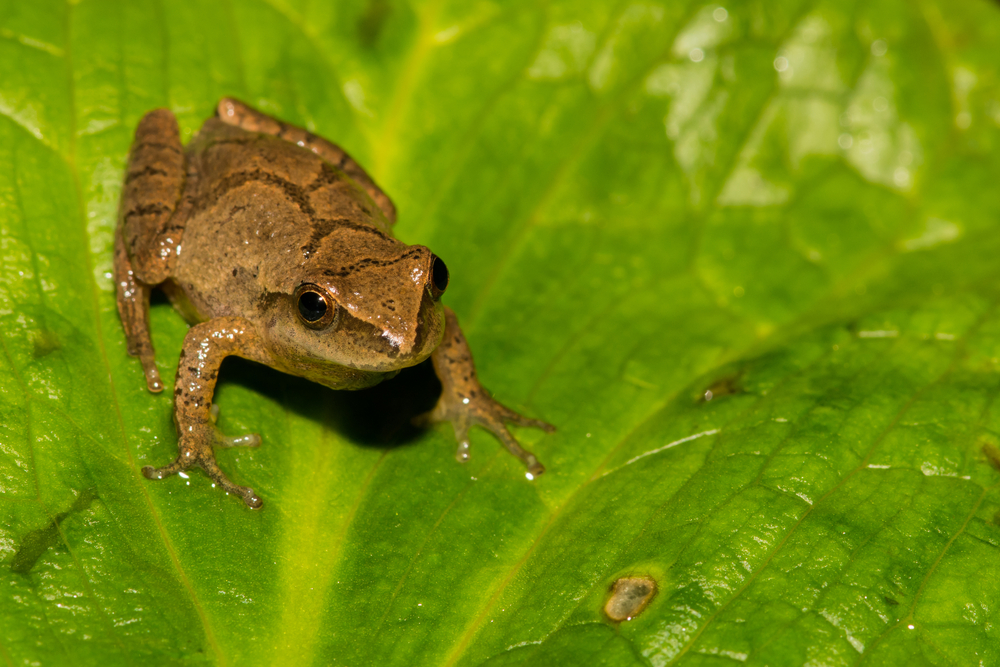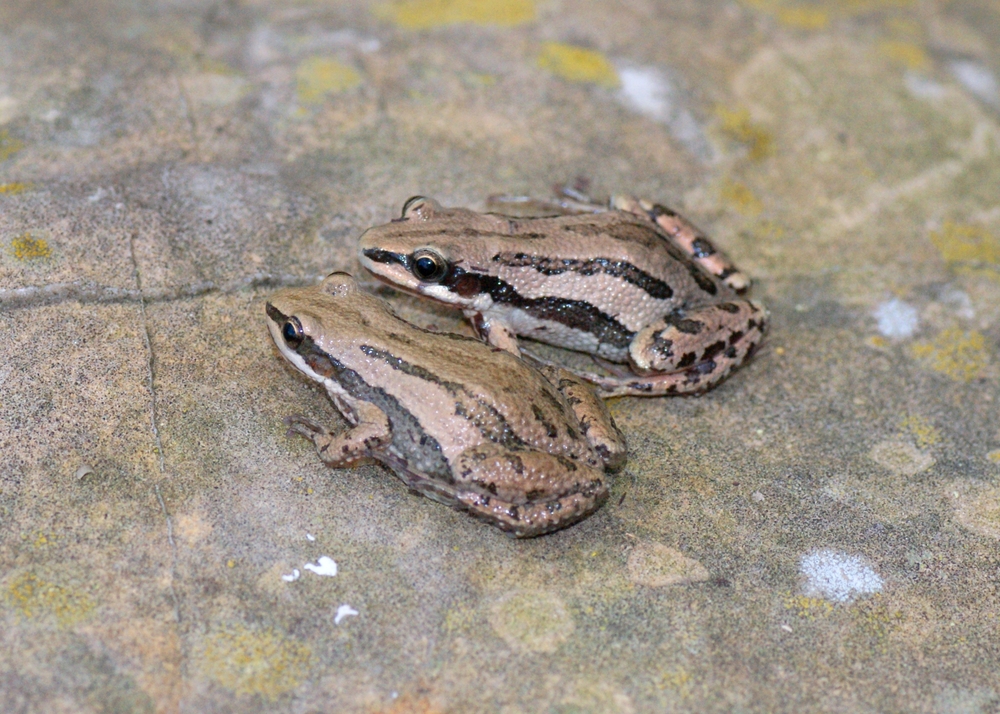One of the many benefits of Missouri’s plentiful greenery is that it draws in all sorts of different wildlife. The plants and trees that engulf this beautiful state are home to hundreds of species of fowl, rodents, amphibians, and many mammals of all sizes. One of the most fascinating animals that call Missouri home is frogs.
Tree frogs are particularly interesting as they are difficult to find due to spending most of their time in trees. They are also exceptionally small and can navigate even the tiniest twigs and leaves, using their padded feet to climb. Out of the 600 species of Tree Frogs, only 30 of them reside in the US. Many of these native Tree Frogs call Missouri home, and we will review several in this article.
Green Tree Frog (Dryophytes Cinereus)
Native to the Southern US, the Green Tree Frog is found only in the Southeastern corner of Missouri. Perhaps the most notorious of the Tree Frogs, the Green Tree Frog has bright green coloring, smooth skin, and large pads on their feet for climbing trees.
They are pretty small compared to other frogs or toads, usually between one and two inches in length. These Tree Frogs prefer warm, marshy wetlands and often live near lakes or ponds, feeding on mosquitoes and other small insects.
Gray Tree Frog (Dryophytes Versicolor)
Unlike its green cousin, the Gray Tree Frog can withstand a much cooler environment and is native to the Eastern US and parts of Canada. They reside throughout the entire state of Missouri.
This frog is exceptionally difficult to find due to its ability to camouflage itself. It can change its color to many different shades, from black to white. The Gray Tree Frog, which grows no more than two inches, has textured skin, perfect for blending in with tree bark.
Bird Voiced Tree Frog (Dryophytes Avivoca)
The Bird Voiced Tree Frog gets its name due to its call, which sounds remarkably like a songbird. It is native to the Southeast US and lives in the Southernmost parts of Missouri. These Tree Frogs live most of their life in trees and bushes, only ever coming down to breed.
They feed on beetles, ants, and whatever other insects they can find in their trees. They can come in various colors, including gray, brown, and green, and the shade of these colors can change depending on temperature.
Northern Spring Peeper (Pseudacris Crucifer)
This tiny, adaptable Tree Frog gets only up to 1.5 inches long and lives throughout most of the Eastern US and Canada. They are often found throughout Missouri in the lowest bushes and shrubs along the forest floor.
Spring Peepers can come in shades of tan and brown, sometimes almost pinkish, and have a dark x-shape or cross along their backside. Their loud, high-pitched call is most prominent in early spring, thus their name. In cooler climates, the Spring Peeper hibernates under logs or forest debris and can survive temperatures as low as 17°F.
Boreal Chorus Frog (Pseudacris Maculata)
The Boreal Chorus Frog is native to the central US and Canada and lives throughout Missouri, except for the Southernmost parts. Only reaching up to 1.1inches, this tiny tree frog is usually brown in color, but some variants can be green.
They also tend to have a darker-colored stripe across their snout and down either side. Breeding season for these frogs is February through April, so it’s not uncommon to see some of them out and about while there is still snow on the ground.
Conclusion
As we’ve seen, a wide variety of Tree Frogs reside in the State of Missouri. Many of these are rarely seen, though they will undoubtedly be heard. During the spring and summer months, you will have almost definitely heard the call of at least one of these Tree Frogs at some point in time.
Like most amphibians, Tree Frogs are an essential part of our ecosystem. They help maintain clean waterways, support the food chain and control pests and diseases. The State of Missouri is lucky to have many of these little guys running around. Though they may be small, they certainly have a big impact.
